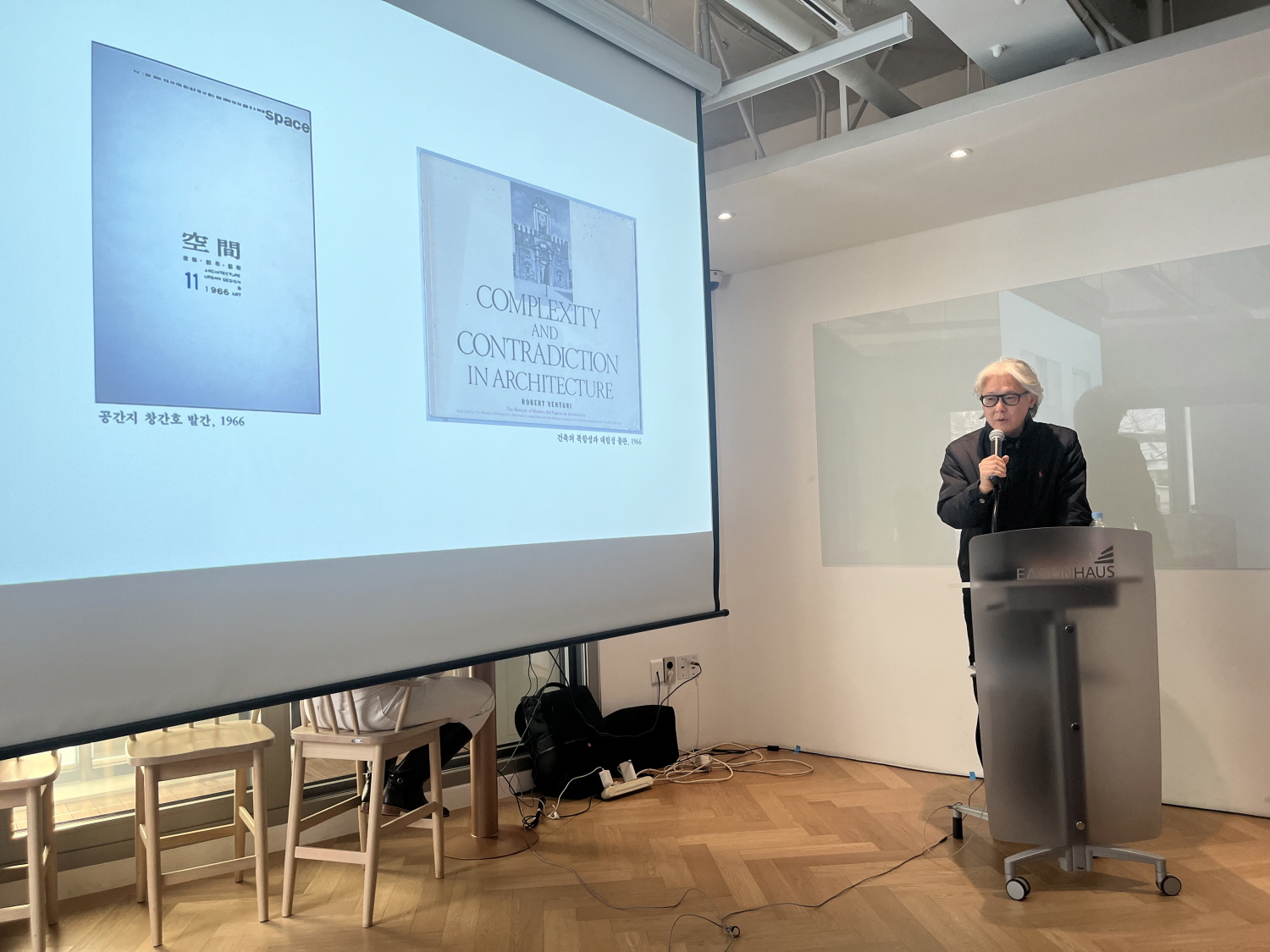SPACE April 2024 (No. 677)

Book talk on In Search of Lost Korean Houses ©Park Jiyoun
On Feb. 29, a book talk featuring the author Suh Jaewon (principal, aoa architects) of In Search of Lost Korean Houses published by SPACE BOOKS, took place at EAGON HAUS. The book talk, which was held both online and offline, provided insight into the background and guiding concept of the book and the author’s attitude towards architecture as a contemporary architect. In Search of Lost Korean Houses features a selection of eight houses from the 1960s and 1970s, which are introduced in SPACE. He was going to analyse the architects’ work tendencies in the late 1960s and 1970s, when state-led architectural planning was taking place, by analysing houses that were relatively well represented. At the same time, he noted that while the analysis was based on materials from SPACE, the limitations of available data required him to extrapolate and infer certain aspects. The eight housing projects, reconstructed in drawings, models, and renderings, aid the reader’s understanding, providing clues to the architect’s inner logic behind the formal construction.
The author described architects as ‘intermediary beings’, perpetual wanderers and thinkers caught between function and form, conception and construction. Senior architects featured in the book, such as Joh Chang-Kul and Chong Kil Hyup, also experiment to build their own architectural language and ponder the fate of architects in terms of them being torn between reality and ideals, rather than evaluating them solely in terms of the results or achievements of their work in turbulent times. In the end, what the author sought to reveal was an attitude towards architecture, which is as rigorous and strict as the architects themselves. As with professional ethics, there will come a time when we all have to form our own attitude towards architecture. For architect Suh Jaewon, In Search of Lost Korean Houses is a practical archive that fills in the blanks of modern Korean architecture in areas that have been neglected in the past, as well as revealing his attitude toward architecture.





